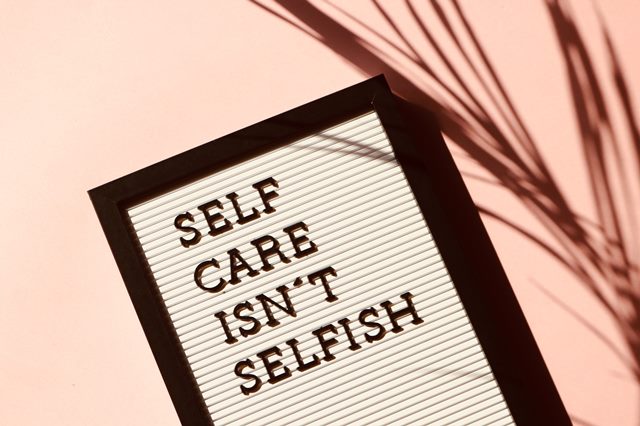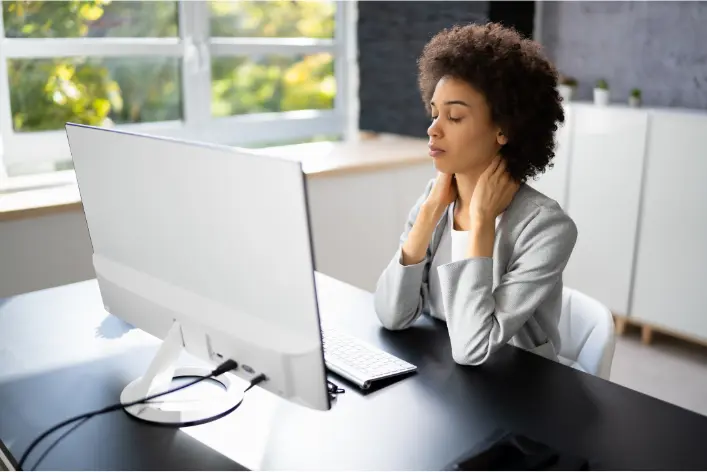Last Updated on May 15, 2023
Mental health is an important aspect of our overall well-being, and we must treat it as seriously as our physical health. One of the most important ways to promote good mental health is to provide people with a safe place to go.
Having a safe space can provide an escape route from all the stress, pain, and confusion. It’ll help you unwind, relax, and feel at ease being yourself. This article will look at how having a safe place can help a person’s mental health and promote well-being.

What Is a Safe Place?
A safe place is a physical or virtual location where a person feels secure, protected, and safe from harm. It is a place where one can get away from stress and anxiety, process emotions and feelings, and feel supported and understood.
It can be a physical space, like a room in one’s home, a park, or a sanctuary. Or it can be a virtual space, like a chat room or an online support group as long as you can escape stressors and find peace and tranquility. You must also ensure that you’re without fear of being judged or harmed.
A safe place can also serve as a haven for self-care and reflection. Many people believe that having a safe place allows them to engage in relaxing activities, such as meditation, yoga, journaling, or even reading. It can provide a space for self-reflection, which can benefit people dealing with mental health issues like depression or anxiety.
Read: The Best Self-Care Routines for Your Mental Health
Having a safe place provides a sense of community and emotional support. Support groups, for example, offer a confidential environment for people to share their experiences and feelings with others who understand.
This can be especially helpful for people dealing with mental health issues, giving them a sense of validation and understanding. Having a safe place to go can be especially beneficial for people who are dealing with mental health issues.
The Benefits of a Safe Place on Your Mental Health
A safe space can have the following benefits for your mental health:
Physical and Emotional Security
One of the primary advantages of a safe place is that it provides individuals with a sense of security and protection. This is especially important for those subjected to trauma or abuse.
A safe place can provide physical and emotional security, which can be critical for healing and recovery. In addition, it can provide a feeling of sanctuary and refuge, allowing people to escape the stress and demands of daily life.

Provides a Sense of Belonging
Another advantage of having a safe place is that it can help with emotional well-being. There’s a sense of belonging and connection, which is especially important for those who feel isolated or disconnected. This can help to reduce anxiety and depression while also boosting self-esteem and self-worth.
Read: How to Bounce Back From Pregnancy and Postpartum Depression
Improves Physical Health
There are also benefits to physical health. Stress can cause several physical health issues, including headaches, heart disease, and high blood pressure. Individuals can reduce stress levels and improve their physical health when they are in a safe environment.
It can provide a space for individuals to relax and recharge, allowing them to return to their daily tasks with renewed energy and focus.
Enhances Personal and Career Growth
Having a safe place can also be essential for personal growth and development. It can provide a space for individuals to explore new ideas, experiment with new ways of thinking, and take risks without fear of failure. This can foster creativity, self-expression, and self-discovery, allowing individuals to reach their full potential.
It helps to Build Quality Relationships
In addition, a safe place can be a valuable resource for building and maintaining healthy relationships. It can provide a space for individuals to connect with others, share their thoughts and feelings, and build trust and intimacy.
This can be especially important for those who have experienced relationship issues, as it can provide a space for healing and growth.
Read: What is the Link Between Mental and Physical Health?

How to Create Your Safe Place to Improve Mental Health
Creating your own safe space is a powerful way to take control of your emotional well-being and find peace and security. We already know a safe place can be a physical location or a mental state, and it can be created in various ways.
Here are some ideas for making your safe place to improve your mental health:
Identify Your Needs
The first step toward creating your safe place is determining what you require to feel safe and secure. This can include factors such as privacy, comfort, and familiarity. Consider what kind of environment makes you feel the most at ease and relaxed.
Choose a Location
Once you know what you need, you can start to think about where you would like your safe place to be. It could be a specific room in your home, a quiet park, or even a virtual space like a chat room or online forum. Your location should be easy to access and provide privacy and security.
Create a Comfortable Environment
After you’ve decided on a location, you can begin to create a relaxing atmosphere. This could include soft lighting, comfortable furniture, and soothing colors. However, you may also want to include personal touches such as pictures, candles, or even a small garden.
Just make sure that all you have in your environment are those things that help you settle in your safe space. In other words, this might not include triggers — things that could remind you of past painful experiences. But if it works for you, why not?
Use Mindfulness Techniques
Mindfulness practices such as meditation and yoga can assist you in creating a safe mental space. These techniques can help you focus on the present and let go of negative thoughts and emotions. Mindfulness techniques can also create a sense of security and peace in any physical or virtual location.

Practice Self-Care
Self-care is essential for maintaining a safe place, both physically and mentally. This might include things like exercise, healthy eating, and getting enough sleep. You can also practice self-care by setting boundaries. Like saying no to things that don’t serve you and make you feel unsafe.
Keep it Personal
Your safe place should be unique and reflect your specific needs and preferences. It should be a welcoming and nurturing environment that you can return to whenever you need a sense of security and peace.
Avoid getting your safe place crowded or open to distractions. If possible, guide it with your strength, including cutting off some things. Do everything in your power to make sure it remains personal.
Creating your safe place can take time and effort, but it is well worth it. Remember that your safe place can be a physical location or a mental state, and it can be created in various ways. Hence, experiment with different methods and find what works best for you. When you finally do, ensure you stick to it.

Tips for Maintaining Your Safe Space
Maintaining a safe place is an important aspect of self-care and emotional well-being. However, maintaining a safe place can be challenging, especially when life gets busy or stressful. Here are some tips for maintaining your safe place.
Keep it Organized
Keeping your safe place organized and tidy can help you feel more in control and at ease. Several studies have found a connection between organized spaces and improved mental health. Take the time to declutter and organize your space, making it easy to find what you need. This will also make it a more inviting and comfortable space.
Make Sure it Remains Personal
This is coming back again because it is a critical tip that shouldn’t be ignored. Your safe place should be personal and reflect your unique needs and preferences. You can add personal touches such as photos, candles, or artwork that make you feel happy, calm, or relaxed. These personal touches will help you connect with the space and feel more at home.
Set Boundaries
Setting boundaries is an important part of maintaining a safe place. This includes setting limits on who and what is allowed in your space and what you are willing to tolerate.
Be assertive and communicate your needs clearly to those around you. Do not let anyone invade your safe place, no matter the relationship. Guide it with all your strength!
Review and Refresh
Review and refresh your safe place regularly. This can help you assess if it is still meeting your needs and if any changes or adjustments need to be made. It also allows you to make any necessary updates and refresh the space.
Before you go…
Hey, thank you for reading this blog to the end. I hope it was helpful. Let me tell you a little bit about Nicholas Idoko Technologies. We help businesses and companies build an online presence by developing web, mobile, desktop, and blockchain applications.
We also help aspiring software developers and programmers learn the skills they need to have a successful career. Take your first step to becoming a programming boss by joining our Learn To Code academy today!
Be sure to contact us if you need more information or have any questions! We are readily available.











